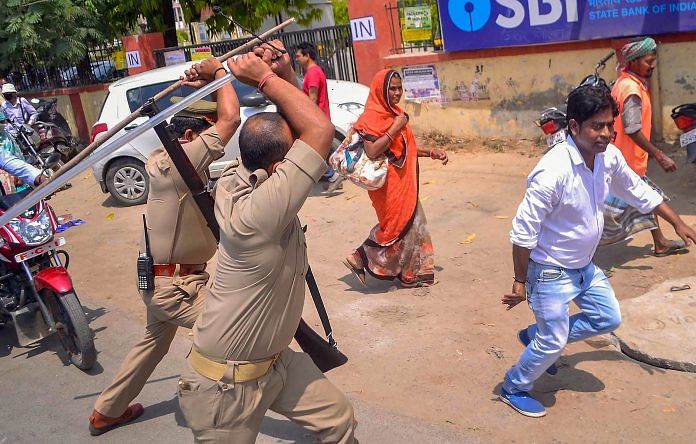Are Dalits of Raghopur and West Bengal not Dalits? Only when Dalits are attacked in Gujarat and Uttar Pradesh, there is mass outrage among urban intellectuals.
This is not to indulge in whataboutery, but a question seems to hang over the Dalits of Raghopor in Bihar: Are we the lesser Dalits?
On a day when many liberals were celebrating the victory of the Rashtriya Janata Dal (RJD) in the Jokihat assembly constituency in Bihar, there was havoc in Raghopur in Vaishali district. Three days before the bypoll results, 15 Dalit homes were set on fire here allegedly by members of the dominant Yadav community. Raghopur is the constituency of Bihar’s leader of opposition Tejashwi Yadav.
The scene was reminiscent of the Bihar of 90s, where caste-related violence was a norm. But there was no social media outcry, no Twitter storm over it. There were no prime time debates on national television. This should not be a surprise.
After all, Tejashwi Yadav’s party, the RJD, is hailed by liberals as an organisational embodiment of social justice, which helped sustain the party for so long. And he is playing a key role in stitching together the grand alliance, rekindled by Karnataka’s coalition of convenience.
The politics of polarisation in the country has brought in a dangerous selectivity in terms of how we look at violence against Dalits now. Are Dalits of Raghopur and West Bengal not Dalits? Only when Dalits are attacked in Gujarat and Uttar Pradesh, there is mass outrage among urban intellectuals.
The Dalit families in Raghopur village were repairing their houses when the Yadavs allegedly stopped them. Protests ensued and both the police and members of the Yadav community allegedly beat them.
This remains a textbook case of institutional violence against the Dalit community because of the partisan role of the authorities. The block development officer is from the Yadav community. Videos purportedly show victims from the Paswan caste complaining about their safety and future in the village.
Last week, another Dalit teenager, Trilochan Mahato, 18, was killed on account of his political affiliation in Purulia district of West Bengal. The killers had the audacity to write, “You deserve to die for doing politics and working for BJP at this young age”.
The National Crime Records Bureau (NCRB) mentions that there is a 66 per cent increase in cases of atrocities against Dalits and tribal communities from 2007 to 2017. Every 15 minutes, an atrocity is reportedly committed against a person from the Dalit community.
The statistics are debilitating enough. But the prevalent practice of blaming only one political ideology for this is doing a great disservice to the Dalit cause. Every single incident of atrocity against a Dalit is equally important and deserves condemnation and coverage of highest proportion.
Caste remains a brutally divisive cleavage that plagues our mindset to this day and age. But the studied and sustained silence of a certain section of our intelligentsia, who claims to be the narrative-setters and discourse-builders, is disturbing.
The RJD gets a freeway despite presiding over the state when one of the most horrific assaults on Dalits, the Bathani Tola massacre (one among many), was carried out in which 21 Dalits were slaughtered in broad daylight. The families of victims still await justice.
Rohith Vemula and Una became national issues overnight compared to the minimal reporting of incidents like Raghopur. Many would remember the anniversary of Vemula, but Raghopur is not on the urban mindspace even for a few days. Dalits should not be treated as fodder to fuel the targeted agenda of a certain section of intelligentsia.
Guru Prakash is a fellow at India Foundation.





True , leftists are selective, when Muslims killed Dalits , it will never shown in Indian secular media
This article by Guru Prakash shows the mirror to the all India Lutyens Brigade and their constant selective ranting for social justice. Brilliant. Violence and injustice cannot be segregated into ok and not ok categories